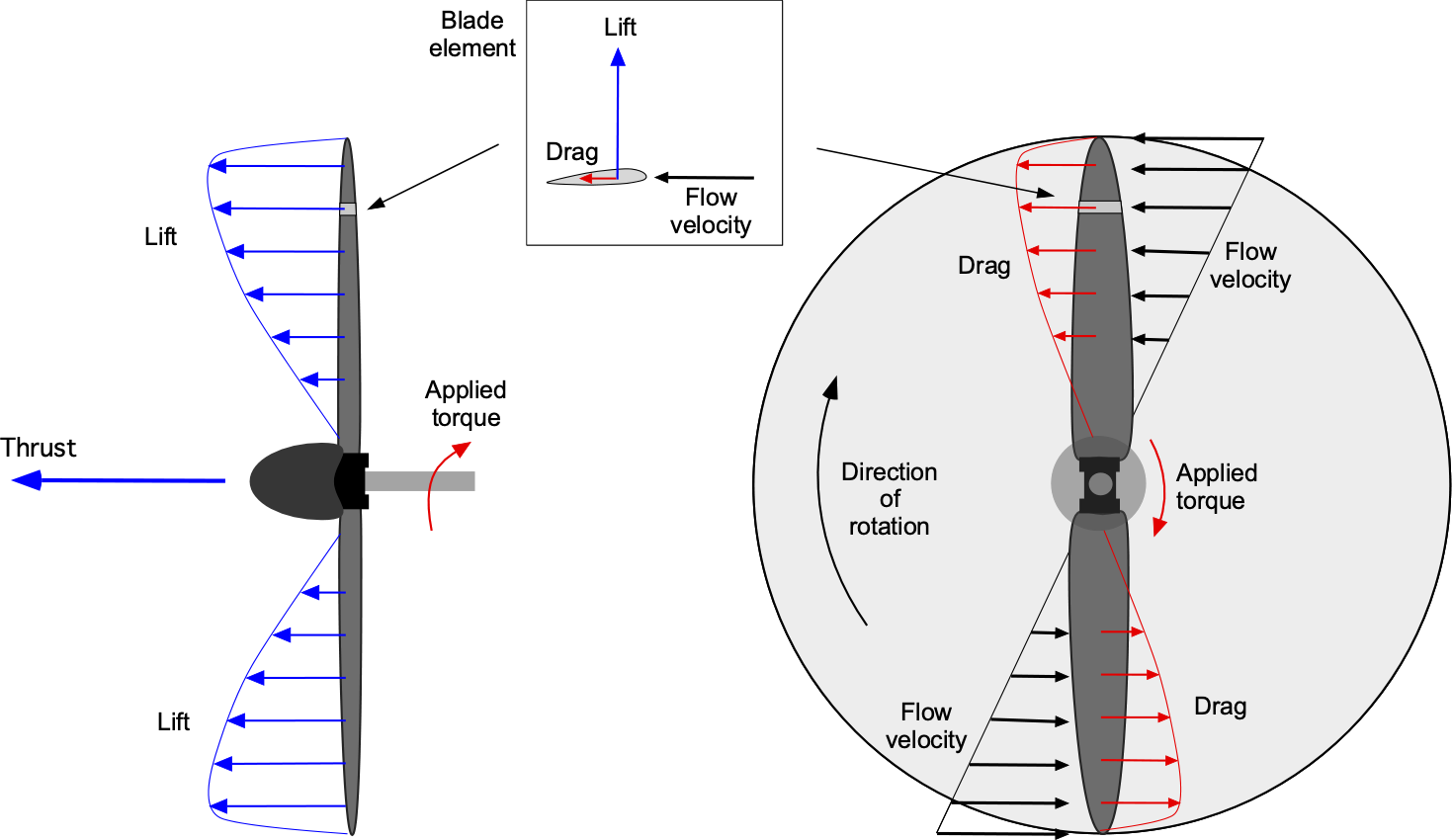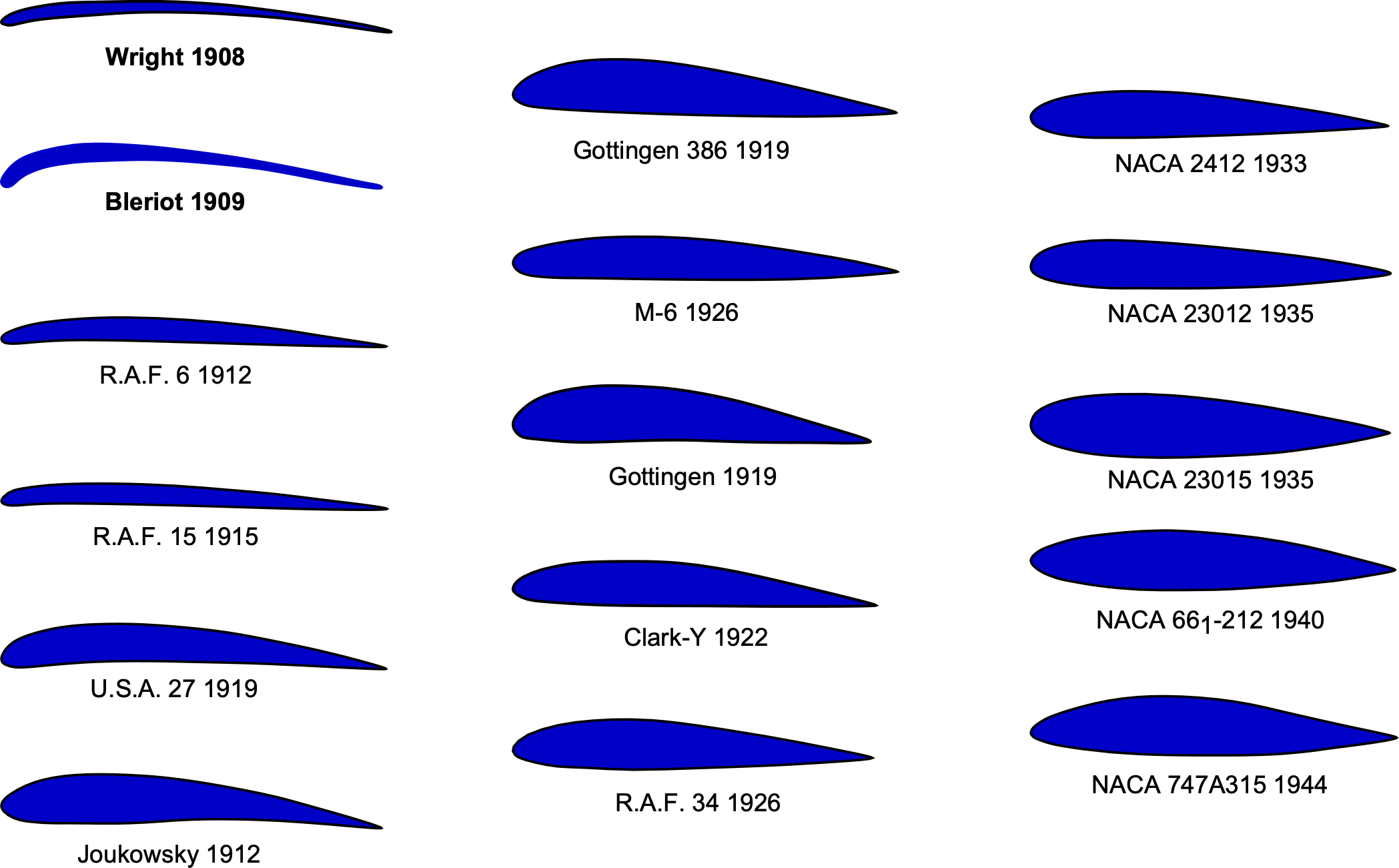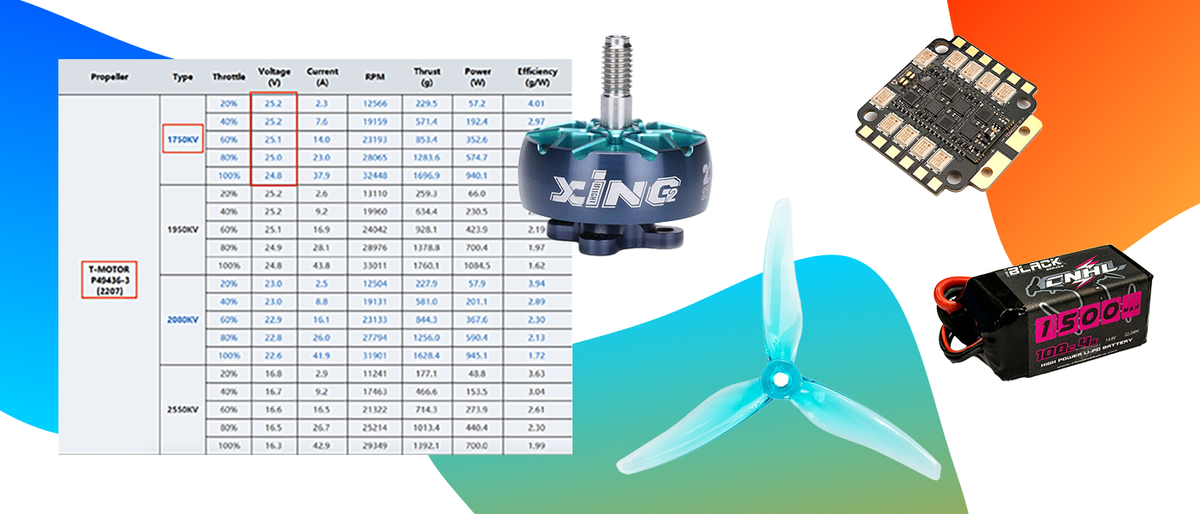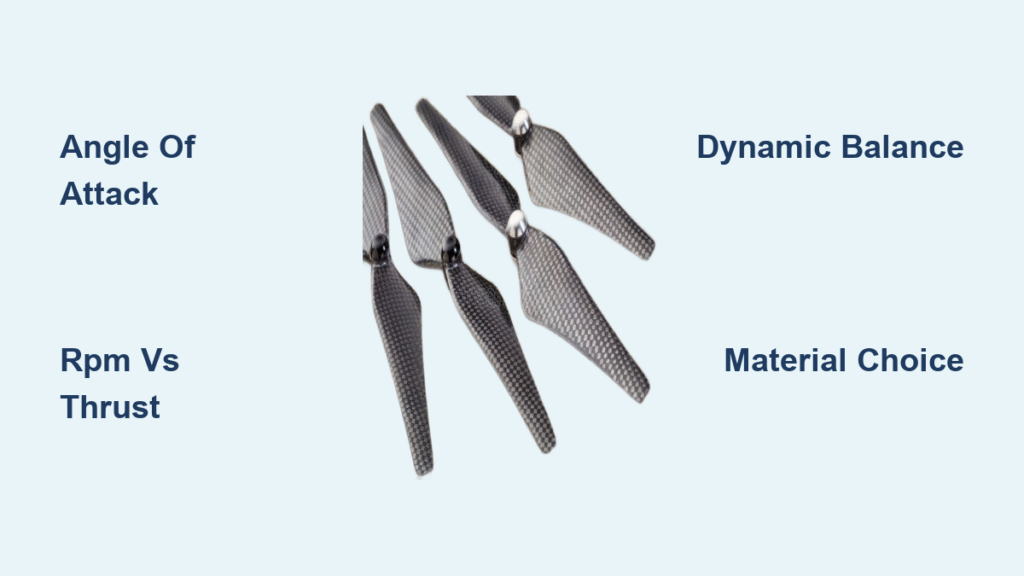Your drone lifts off the ground, hovers perfectly still, then rockets forward—all thanks to four spinning pieces of plastic or carbon fiber. Yet most pilots never stop to ask: how do these propellers actually generate the thrust that defies gravity? Whether you’re troubleshooting poor flight performance or selecting upgrades for your build, understanding propeller mechanics transforms you from button-pusher to aircraft engineer.
This guide breaks down the physics, design choices, and real-world factors that determine how efficiently your drone flies. You’ll learn why racing quads scream at 30,000 RPM while camera drones purr at 8,000, how blade shape affects battery life, and what to check when vibrations ruin your footage.
Propeller Aerodynamics Explained

Every propeller blade is essentially a rotating wing. As it spins, the curved upper surface forces air to travel faster than the flatter bottom, creating a pressure difference. This pressure gradient generates lift perpendicular to the blade surface, which becomes thrust that pushes your drone through the air.
Angle of Attack Controls Thrust Output
The blade’s angle of attack—how steeply it meets the airflow—directly determines thrust. Steeper angles move more air per revolution but create more drag, demanding extra power from your motors. Push too far and the blade stalls, causing sudden thrust loss and violent vibrations.
Key insight: Each blade twists from root to tip, automatically adjusting the angle of attack to maintain consistent lift across its entire length. This geometric twist compensates for the faster-moving blade tips, preventing stall while ensuring efficient thrust generation throughout rotation.
RPM vs. Thrust Trade-offs
- 8,000-9,000 RPM: Standard for camera drones balancing efficiency and noise during cinematic shots
- 15,000+ RPM: Racing quads maximizing agility over battery life for tight course navigation
- 5,000-7,000 RPM: Heavy-lift platforms using larger props for maximum efficiency with payloads
Blade Design Decisions Matter

Airfoil Shape Affects Performance
The blade’s cross-section determines its efficiency envelope. More curved (cambered) airfoils generate stronger lift at low speeds but suffer higher drag when spinning fast. Racing props use flatter, symmetrical airfoils to slice through air efficiently at high RPM.
Pro tip: Look at your prop’s thickness distribution. The thickest point should sit 25-30% back from the leading edge—any deviation indicates poor design or manufacturing defects that compromise performance.
Chord Length Tapers From Root to Tip
No quality propeller has uniform blade width. The chord (blade width) decreases toward the tip to equalize lift distribution and reduce tip vortices. This tapering prevents the outer sections from overpowering the inner sections, creating smoother thrust and reducing energy loss.
Visual cue: When inspecting your props, check that the blade appears thinner at the edges than near the hub. If the width remains constant, you’re likely using a low-quality propeller that sacrifices efficiency for manufacturing simplicity.
Fixed vs. Variable Pitch Systems
Consumer Drones: Fixed-Pitch Simplicity
Your DJI or Autel drone uses fixed-pitch props because they’re lightweight, reliable, and cheap to manufacture. Thrust control comes entirely from motor speed changes—simpler electronics but less efficient across different flight phases.
Critical limitation: Fixed-pitch systems waste energy during transitions between hover and forward flight since they can’t optimize blade angle for each maneuver. This inefficiency directly reduces your flight time by 10-15% compared to variable-pitch alternatives.
Variable-Pitch for Power Users
High-end heavy-lift platforms and some fixed-wing UAVs use variable-pitch systems. These actuators can change blade angles mid-flight, allowing:
- Constant motor RPM for maximum efficiency
- Instant reverse thrust for aggressive braking
- Fine-tuned thrust control without speed changes
Cost reality: Variable-pitch adds 15-30% to system cost and complexity, making it viable only for commercial applications where flight time optimization justifies the investment.
Material Science Behind Prop Performance
Carbon Fiber Dominates High-End Builds
Carbon-fiber-reinforced props deliver the best stiffness-to-weight ratio, crucial for large-diameter props that would flex excessively in plastic. The Matrice 600’s 21-inch props use aerospace-grade carbon fiber to maintain shape under 50+ pounds of thrust.
Warning: Carbon fiber props are brittle in crashes. Always check for micro-cracks after impacts—even hairline fractures can cause catastrophic failure mid-flight.
Plastic Props Balance Cost and Durability
Injection-molded nylon props work perfectly for most consumer drones. They absorb impacts better than carbon fiber, preventing motor shaft damage during crashes. However, UV exposure gradually embrittles plastic—rotate spares if you fly frequently in sunny conditions.
Maintenance tip: Replace plastic props every 50 flight hours or 200 flights, whichever comes first. Look for “UV chalking”—a white powdery surface that indicates material degradation.
Dynamic Balance Eliminates Vibrations
Even microscopic imbalances create vibrations that ruin gimbal footage and stress bearings. Quality props undergo dynamic balancing where technicians add micro-weights or remove fractions of a gram until imbalance stays below 0.1 g·mm.
DIY check: Spin each prop by hand—any wobble or grinding indicates poor balance. Replace immediately to protect your motors and camera stabilization. For professional work, consider investing in a prop balancer that detects imbalances as small as 0.05 grams.
Thrust Calculations Made Simple
The thrust equation governs everything:
T = C_T × ρ × n² × D⁴
Where:
– C_T = thrust coefficient (propeller design)
– ρ = air density (changes with altitude)
– n = rotational speed (revolutions per second)
– D = propeller diameter
Quick math: Doubling prop diameter increases thrust 16×, while doubling RPM only gives 4× more thrust—but demands 8× more power. This explains why larger props dramatically improve flight time despite their weight penalty.
Motor Matching Critical for Efficiency

Kv Rating Determines Compatibility
Your motor’s Kv (RPM per volt) must pair correctly with prop size. Common combinations:
- 2400-3000 Kv: 3-4 inch racing props
- 1000-1500 Kv: 7-8 inch freestyle props
- 300-500 Kv: 15+ inch heavy-lift props
Mismatch consequences: Too high Kv with large props overheats motors. Too low Kv with small props wastes battery capacity. Always consult your motor manufacturer’s recommended prop size chart before making changes.
ESC Settings Affect Performance
Modern ESCs run PWM frequencies of 24-48 kHz to smooth power delivery. Lower frequencies create torque ripple that shows up as jello in your footage. Always update to the latest firmware for your specific prop/motor combination—many manufacturers release prop-specific tuning profiles that optimize efficiency.
Noise Reduction Strategies
Design Features That Quiet Props
Low-noise props achieve 2-4 dB reductions through:
- Serrated trailing edges: Disrupt tip vortices that create high-frequency noise
- Tapered tips: Reduce tip speed for same thrust
- 3-blade designs: Lower RPM for equivalent thrust
Real impact: DJI’s Mavic 3 low-noise props drop from 75 dB to 71 dB at hover—noticeable but not silent. For wildlife photography, this 4 dB reduction makes the difference between capturing natural behavior and scaring subjects.
Maintenance Intervals by Use Case
| Environment | Inspection Every | Replace When |
|---|---|---|
| Casual flying | 50 hours / 200 flights | Cracks, nicks, UV chalking |
| Industrial/ag | 25 hours | Any impact or delamination |
| Coastal/salt | 15 hours | Corrosion or fiber blooming |
Visual inspection checklist:
– ✓ Leading edge for nicks and chips that disrupt airflow
– ✓ Blade surfaces for cracks or delamination (separation of composite layers)
– ✓ Hub for cracks around mounting holes
– ✓ Overall balance and wobble when hand-spun
Application-Specific Prop Selection
Aerial Photography Prioritizes Silence
Cinema drones use 2-blade carbon props with 9-12 inch diameters. The larger, slower-turning props generate thrust efficiently while keeping noise below 60 dB—crucial for wildlife shoots where even slight noise can disturb subjects.
Pro tip: For indoor studio work, consider adding propeller guards—they add weight but prevent catastrophic crashes near expensive equipment.
Racing Demands Instant Response
FPV quads run 3-blade polycarbonate props optimized for 5-inch pitch and high RPM. These props sacrifice efficiency for lightning-fast throttle response and maximum agility through tight gates.
Warning: Racing props wear out faster—inspect them after every session. A single nick can create enough imbalance to damage your expensive flight controller.
Safety and Protective Measures
Pre-Flight Essentials
- Visual inspection: Check 360° around each blade for damage
- Balance test: Hand-spin props for wobble or unusual sounds
- Tightness check: Verify hub screws are secure with proper torque
- Guard consideration: Use prop guards for indoor or beginner flights
Critical safety note: Never operate your drone with damaged propellers. Even minor nicks can cause vibrations that lead to motor failure or complete loss of control.
Storage Best Practices
Store props in padded cases away from UV light and chemicals. Even brief exposure to gasoline or cleaning solvents can weaken plastic props. For carbon props, avoid impacts during storage—micro-cracks can propagate catastrophically during high-stress maneuvers.
Key takeaway: Your propeller choice directly impacts every flight characteristic—from hover time to top speed. Understanding how drone propellers work lets you optimize for your specific mission, whether that means whisper-quiet footage or breakneck racing performance. Replace props proactively, match them carefully to your motors, and your drone will reward you with reliable, efficient flight. Remember that even the most advanced drone is only as good as its spinning blades—the unsung heroes of aerial photography and racing.



